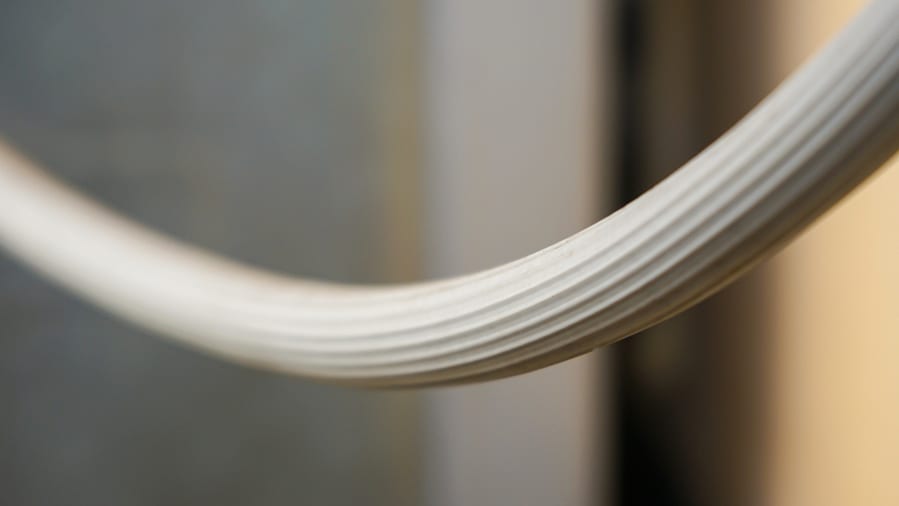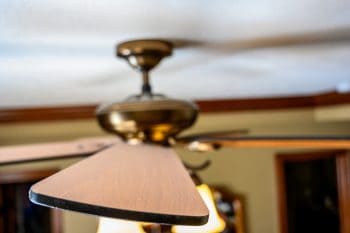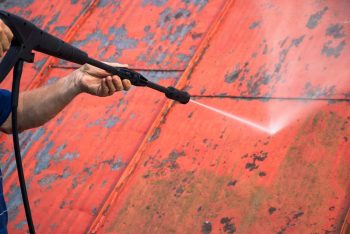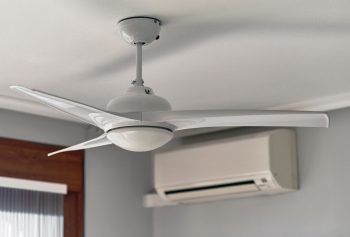
Basic knowledge of the general appliances for your homework can be beneficial. It helps you take complete advantage of modern and efficient machines to avoid any problems and repair the appliances yourself at home without much hustle.
Washing machines are also one of the most exploited machineries in households. Knowing your washer can save you stress and money; otherwise, you might spend on hiring a technician.
One of the significant and questionable phenomena in a washing machine is its raised drainage hose. You might have seen plumbers fixing the drainage hole of the washing machines at a certain height above the washing machine’s level. This preventive measure is taken to avoid the siphoning of water. This means it will keep the drainage water from re-entering into the washer tub and making the clothes soapy again.
Yes, the washing machine drain hose needs to be elevated. It is essential to keep the height of the washing machine drain hose higher than that of the washing machine itself. This helps keep the water and detergent from leaking out from the washing machine while the clothes are being washed. Moreover, it helps in perfect draining of the machine once the cleaning has been done.
Ensure to follow the manufacturer’s guide while installing a washing machine at your home and set the correct height of the drainage hose to prevent the problem of backflow or overflow in your washing machine.
This article will explain why the drainage hole of washing machines is kept elevated and the reason behind it. We will also discuss the perfect height and size of the drainage hole for suitable drainage.
What Should Be the Height of a Washing Machine Drain Hose?

It is vital to keep the height of the washing machine drainage hole above the highest water level in the washing tub. By elevating the drain hose, the chances of siphoning can be avoided.
The height of a drainage hose depends on the power of the pump installed in the washing machine. Therefore, the stronger the pump, the higher the level of the drainage hose, and hence lower the chances of backflow of water.
The height of the washing machine drainage hose can also be checked by holding the pipe in hand and raising it at different altitudes while the water is being drained. The water will be drained faster when the altitude is kept lower, and it will get slower as you elevate the pipe.
How much slow the water gets when the hose is elevated depends on the power of the pump motor. The more the height, the more the pump will have to work to remove the water, and hence more likely will be the chances of generating faults with the pump motor.
So, the correct height of the washing machine drainage hose is not too high or too low. It all boils down to the capability of the washing machine.
Usually, the drainage hose height should be 24 inches from the ground level for a front-loader washing machine.
For a top-load washing machine, the pipe height should be adjusted to around 30 inches from the ground level.
However, checking the manufacturer’s guide for the correct height is essential before fixing the washing machine.
It is important to note that keeping your drainage hose too low or too high can cause backflow or overflow of water in the wash tub. Therefore, it is imperative to consider the height of the drainage hose while fixing your washing machine.
What Should Be the Length of a Washing Machine Drain Hose?

The length and diameter of the drainage hose and its distance from the washing machine can also significantly affect how perfectly the water is drained from the washer.
Drainage hoses are available in many different lengths and diameters. Therefore, it is important to consider their height and length to get the desired results.
1. The Length of the Standpipe
If the drainage hose is fixed at a high altitude, the hose length should also increase. Conversely, the hose length will automatically reduce for a drainage hose at a lower height.
It is essential to keep the standpipe length enough to reach the hose length.
Right Length
The maximum length of a drainage hose should be no high than 2.7 meters. At the minimum, it should not be smaller than 1.2 meters. Ideally, a drainage hose should be as long as 1.5 meters.
Right Diameter
The diameter, on the other hand, should be kept between 1-1/2 inches to 1-1/4 inches.
2. The Distant Between Standpipe and Washing Machine
The more the distance between the standpipe and the washing machine, the higher the chances of backflow of dirty water into the wash tub. Ensure the space is kept as small as possible to avoid such consequences.
How To Lower a Washing Machine Drain Hose?
While you should keep the drainage hose at a proper height to avoid the backflow of dirty water, you must not keep it too high to cause the overflowing. For that reason, you must know how to lower the drain hose of a washing machine.
Make sure not to restrict the drainage hose of your washing machine. Doing so will slow down the machine’s water flow rate, reducing the capacity of your washing machine to hold water.
If the restriction is important, you can use a copper wire. Make a loop of copper wire, attach it around the neck of the drainage hose, and fit it tightly to the desired height on the backside of the washing machine. A lope clamp can also be used for the same purpose.
A special tool, a “non-returning valve,” can be used in the drain hose to prevent the backflow of water. However, it does not provide 100% satisfactory results.
4 Major Reasons Behind an Overflowing Washing Machine Drain Hose
An overflowing washing machine can be of great trouble. It can spill water all over the laundry flooring, causing significant stress. Therefore, it is essential to know the reasons behind an overflowing washing machine to prevent this from happening.
1. Clogged Drain Hose

The main reason behind an overflowing washing machine is either a clogged drain hose or a build-up of waste inside the wash drum.
Both of these reasons will cause the dirty water to stay inside the washing machine, hindering complete drainage. This will eventually lead to odor and mold issues in the future.
2. Low Water Supply

Water pressure is significant to maintain the proper functioning of a washing machine. If the pressure of the water is lower than required, the water will not seem to stop and will keep progressing.
Keeping the water pressure in the pipeline at least 20 psi is essential. For older homes, the problem of a lower water flow is much more eminent. It would help if you got your civil water lines checked in case of lower pressure. Water pressure may also reduce due to a faulty faucet or a clogged water pipeline. You must check them out first before installing the washing machine.
3. Problem With Drain Hose Connections

If the drain hose connections are not made correctly, the problem of overflowing the washing machine will not go away.
Inspect your water pipeline and look for any cracks or clogs. Clean, repair, or replace the damaged drain hose as early as possible to avoid such dangerous consequences.
Twisting or bends in the drainage hose can also be a major foe. Use a wired hose clamp or catcher to fix the drainage hose to a suitable height. This will build tension in the pipe, preventing any obstruction or unnecessary bending.
4. Buildup of Soap Scum

Soap scum is also a big enemy of a washing machine. Using the wrong detergent will slowly build a layer of sedimented minerals at the bottom of the wash tub, which may thicken over time. In addition, it can clog or block the drainage system if not regularly cleaned.
Another big problem with such a layer is the growth of fungi in the washing machine. This will completely spoil the purpose of cleaning and hence can cause immense stress for you.
Conclusion
It is crucial to keep the drainage hose of your washing machine at a high altitude. It helps to avoid siphoning the dirty water back into the wash tub. In the case of a low-maintained drainage hose, the water will drain out from the wash tub of the washing machine when filled to its maximum point.
It is also essential to keep an eye on the length and distance of the drainage hose. One must keep the drainage hose as short in length as possible. Moreover, the distance of the drainage hose should also be kept as short as possible from the washing machine.
It is important to study the manufacturer’s guide before installing the washing machine in its place to get the right results.
Frequently Asked Questions
How To Stop My Washing Machine From Keeping Draining?
If your washing machine keeps draining continuously while filling it up, there might be a problem with the standpipe and drain hose connection. Make sure it has a proper air gap for adequate drainage.
Also, make sure the height of the drain hose is adjusted just where it is supposed to be. Use zip ties or wire loops. Otherwise, adjust the height and fix the hose in its place.
How To Prevent the Washing Machine Drain From Overflowing?
To prevent the drainage overflow from a washing machine, follow the below-provided steps:
- Utilize a lint bag while using the washing machine to prevent it from sticking to the bottom and clogging the drain hose.
- Locate and occasionally clean the lint bag in the washing machine to avoid problems later.
- Keep a distance of at least 0.5 inches between the discharge hose and the drainage pipe to allow efficient drainage.
- Use the suitable detergent for your type and model of washing machine to prevent sediment buildup in the bottom.
- Regularly clean your washing machine drain hose and pipelines.
How To Stop My Washing Machine From Draining Too Fast?
You can use a flow restrictor to conveniently stop your washing machine from draining too fast. It prevents excess pressure from building in the pipes and damages the internal wash system of the machine.
Moreover, clean your drainpipe properly using a hard water cleaning chemical to remove the limescale buildup in the pipe. As it narrows down the diameter of the pipe, it subsequently increases the water flow.











